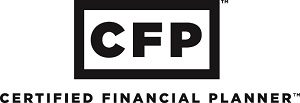Can you tell the difference between someone who is trying to sell you something and someone who is trying to provide a service? Financial Advisors are there to provide a service. They should not be selling you on the next best product. This is my opinion obviously and has been for a long time now. It is something I pride myself on.
Many financial products are not built to benefit the client. They are built to benefit the financial firm that built the product. If you have read my previous articles, you would know that I am not a fan of annuities. The reason is simple. Many annuities come with a cost associated to owning them that makes them a poor investment choice. If you own a variable annuity, you should do some due diligence on your own or call me and I will gladly assist you in understanding all the costs associated with owning these types of products. Financial products that pay a commission usually come with significant fees that are hidden inside the product. These fees are taken directly from your principal and will negatively affect the performance of the investment. It’s often difficult for the investor to understand the costs associated with these types of investments.
In the 20 plus years of helping guide people toward retirement as well as helping people to stay retired, I have seen this scenario all too often. There are new rules that will help investors by limiting the amount of fees that can be charged, but as of now this is only applies to retirement plans. I can see this expanding across all types of investment plans in the future, but as of today these rules do not affect the cost of the products that can be sold in non-qualified accounts.
I have seen variable annuities and other financial products that can have internal fees upwards of 4% annually. Look, it’s difficult to outperform the stock market without any fees, but If you add in the internal expense at a rate of 4% it’s borderline impossible to generate a long-term rate of return that will even come close to the stock market return.
As a fiduciary, I work on a fee only schedule. I do not sell products. I provide solutions to my clients’ long-term goals and objectives. I have always said that investing is simple, but sometimes financial firms and advisors’ complicate things by trying to sell products that they don’t even understand. If the advisor doesn’t understand the product, there is no way an investor can understand it.
If you own a product similar to the one described in this article, please contact me for a complimentary portfolio review.
Am I eligible to Convert my Traditional IRA to a Roth IRA?
Converting your Traditional IRA to a Roth IRA can be one of the best financial decisions made when saving for retirement if done correctly. Prior to 2010 there was an income limit that restricted the conversion to a Roth IRA if your (AGI) was over $100,000. As of 2013, the income limitation does not exist for a conversion, but it still exists for contributions. This does not mean it will not come back in the future, but for 2013 and beyond anyone can convert an existing Traditional IRA to a Roth IRA regardless of income.
For example, someone has a Traditional IRA with $350,000 invested, that IRA can be converted to a Roth and all the taxes need to be paid for the tax year the conversion was completed. After converting to a Roth, the money grows tax-free. Paying the taxes on this money now might sound like a tough pill to swallow, but the potential tax savings down the road can be significant. Wouldn’t you rather pay taxes on $350,000 now than pay taxes on $1,000,000 in the future? One of the keys to doing this correctly is paying the taxes with funds outside of a qualified plan. Paying the taxes with money from the IRA defeats the purpose and will negate the full tax saving potential.
This is just one example of completing a Roth conversion. You can do partial conversions as well. This means you do not have to convert the entire account. You could develop a strategy of doing partial Roth conversions over multiple years. The key is to consult with your tax advisor or accountant to make sure the conversion will not put you into another tax bracket. Every dollar you convert is taxed at your ordinary income tax rate. This strategy works best for younger investors who have longer to allow the money to grow and compound. It can also work well for an older investor who is in a low tax bracket. Another reason to convert to a Roth is that Roth IRAs are not subject to the Required Minimum Distribution after you reach age 73. For those of you out there that do not plan to use your IRA money to live this can be a huge advantage when it comes to passing along your IRA to your beneficiaries. Roth IRAs continue to grow tax-free after the conversion and after you die. There are distribution requirements for the beneficiaries, but the distributions are tax-free as well.
This strategy might not be right for everyone. I would advise you to consult with a Certified Financial Planner™ or your tax advisor prior to taking advantage of this potentially large tax savings. One of the best times to complete a Roth conversion is when the value of your Traditional IRA has fallen due to a market correction like we experienced in 2022. If you have questions on this article or would like to schedule a free financial review. Please contact Jay Chapman at 772-320-9658 or email [email protected].




